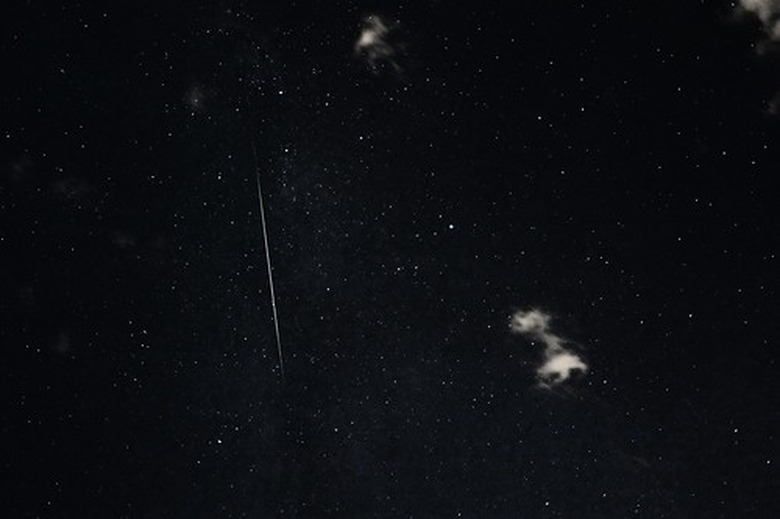What Are Meteors Made Up Of?
Meteors are chunks of debris that roam through space and sometimes fall to earth. Most meteors are only about the size of a grain of sand. Particles of dust, known as meteroids, enter earth's atmosphere every day.
Features
Features
Meteor is the scientific name for the bright flash of light that appears in the sky. The light occurs because the meteor falls at such a high rate of speed, both the meteor and the surrounding air become superheated. The molecules of the meteor and atmosphere break into particles and then recombine, releasing energy to form the streak of light.
Types
Types
Meteors are classified into three major types known as iron, stony-iron and stony. Iron meteors are comprised of 100 percent iron and nickel. Stony-iron meteors are made up of 50 percent iron and 50 percent silicates. Stony meteors are composed of 10 to 15 percent iron and nickel with 85 to 90 percent silicates.
Meteor Showers
Meteor Showers
When a comet nears the sun, it may lose rock and dust particles ejected in its tail. As earth enters the path, the particles are picked up in the atmosphere. During a meteor shower, hundreds of meteors may be seen in the night sky.
Meteorites
Meteorites
Although most meteorites come from asteroids and comets, according to the University of Leicester, Department of Physics and Astronomy, some meteorites have a composition similar to moon rocks and materials found on Mars, suggesting that impacts with those planetary bodies threw off surface material.
Fun Fact
Fun Fact
The famous impact crater at Barringer, Arizona is 1.2 kilometers across and estimated to be 49,000 years old.
Cite This Article
MLA
Zagata, Darlene. "What Are Meteors Made Up Of?" sciencing.com, https://www.sciencing.com/meteors-made-up-of-5828134/. 24 April 2017.
APA
Zagata, Darlene. (2017, April 24). What Are Meteors Made Up Of?. sciencing.com. Retrieved from https://www.sciencing.com/meteors-made-up-of-5828134/
Chicago
Zagata, Darlene. What Are Meteors Made Up Of? last modified March 24, 2022. https://www.sciencing.com/meteors-made-up-of-5828134/
